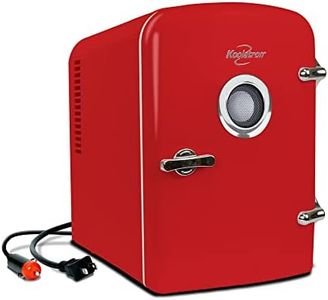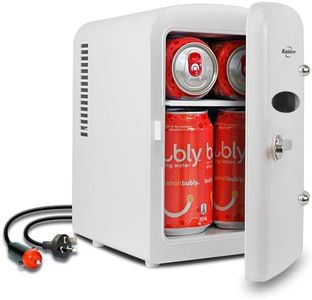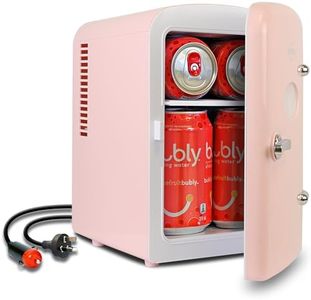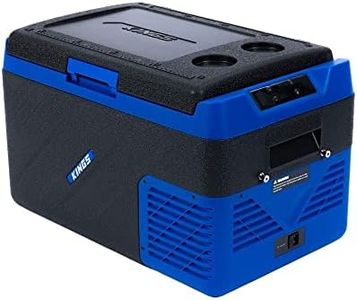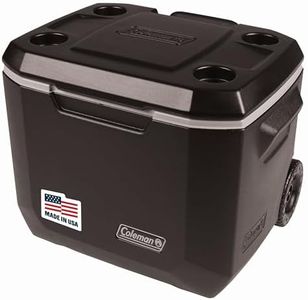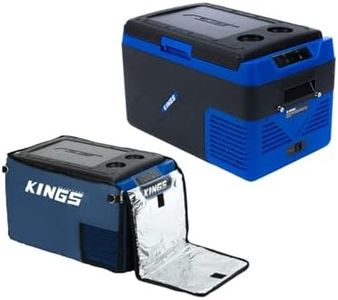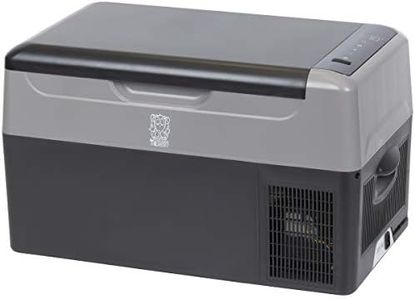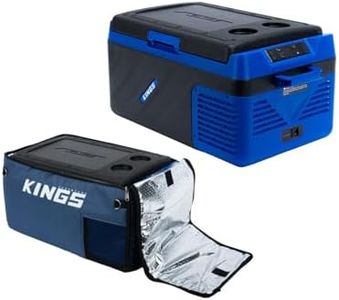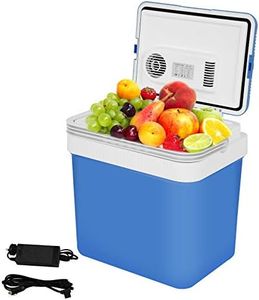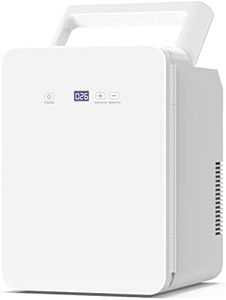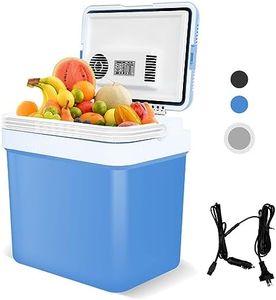We Use CookiesWe use cookies to enhance the security, performance,
functionality and for analytical and promotional activities. By continuing to browse this site you
are agreeing to our privacy policy
10 Best 12 Volt Coolers
From leading brands and best sellers available on the web.By clicking on a link to a third party's website, log data is shared with that third party.
Buying Guide for the Best 12 Volt Coolers
When choosing a 12-volt cooler, it's important to consider how you'll use it—whether it's for camping, road trips, work sites, or even boating. Unlike regular coolers, 12-volt models can plug into your vehicle’s socket and often provide continuous cooling while driving or parked. Picking the right one means understanding the key features that impact performance, convenience, and fit for your specific needs. Focusing on the right specifications will ensure your food and drinks stay at the temperatures you want, and that the cooler fits well with your vehicle and lifestyle.CapacityCapacity tells you how much the cooler can hold, usually measured in liters or quarts. This is important because it directly determines how much food and drink you can keep cool at once. Small models (under 20 liters) work best for solo trips, lunches, or short outings. Medium capacities (20-40 liters) suit couples or small families for day-long adventures. Large coolers (over 40 liters) are great for big groups or longer trips. Size up based on how much you plan to store and how many people you’re packing for—think about the space you have in your car, too!
Cooling performanceThe cooling performance usually refers to how cold the cooler can get compared to the temperature outside. This matters a lot if you’ll be in hot conditions or need to keep perishable items safe. Some coolers just lower the temperature a set amount (for example, 30-40°F or 15-22°C below ambient), while others act more like true refrigerators and let you set exact temperatures, even below freezing. If you want to carry dairy, meat, or ice cream, look for the adjustable, fridge/freezer-like ones. For snacks and drinks, the simpler, basic models often do fine.
Power source and consumption12-volt coolers run off your vehicle’s power, but the way they use that power—how much and how efficiently—matters for your battery and your plans. Lighter coolers use less power, good for short stops or light use. Heavier-duty ones could drain your battery faster if left running long. Pay attention to wattage or amp draw to know what your vehicle can handle, and think about whether you’ll also want to plug the cooler into regular wall power or solar panels—some models support this for more flexibility.
PortabilityPortability covers the size, weight, handles, and wheels of the cooler. This is especially important if you’ll need to move it from car to picnic site, or into camp. Smaller, lighter coolers are easy to carry for one person, while larger ones often require two and benefit from wheels. If you’ll be opening the trunk or sliding the cooler out often, look for sturdy handles. Your personal strength, how far you need to carry it, and the layout of your vehicle should guide your choice here.
Durability and constructionThe material and build quality decide how long your cooler will last and how well it handles bumpy rides, dust, and moisture. Plastic-bodied coolers are lighter and affordable, while metal or reinforced models hold up better to heavy use. Some are weather-sealed for outdoor use. If you’ll be taking the cooler on rugged adventures or using it daily, look for something with reinforced corners and tough latches. If it’s just for easy car trips, you might be fine with a lighter build.
NoiseAll 12-volt coolers make some sound because of their internal fan or compressor, especially refrigerator-style ones. Quiet models are less distracting if they’ll be used inside your vehicle or near sleeping areas, while more powerful coolers might have more hum. If you’re sensitive to noise or plan to use the cooler overnight, check reviews or specs for decibel levels and aim for a quieter unit.
Control and display optionsThe controls on a cooler range from simple on/off switches to digital panels with temperature displays and adjustments. Basic models keep things simple, while advanced ones let you set and monitor exact temperatures. Easy-to-read displays and well-marked buttons make life easier if you want more control, or if you need to know the current temperature inside. Pick based on how much control you want and how confident you feel using simple versus advanced controls.
